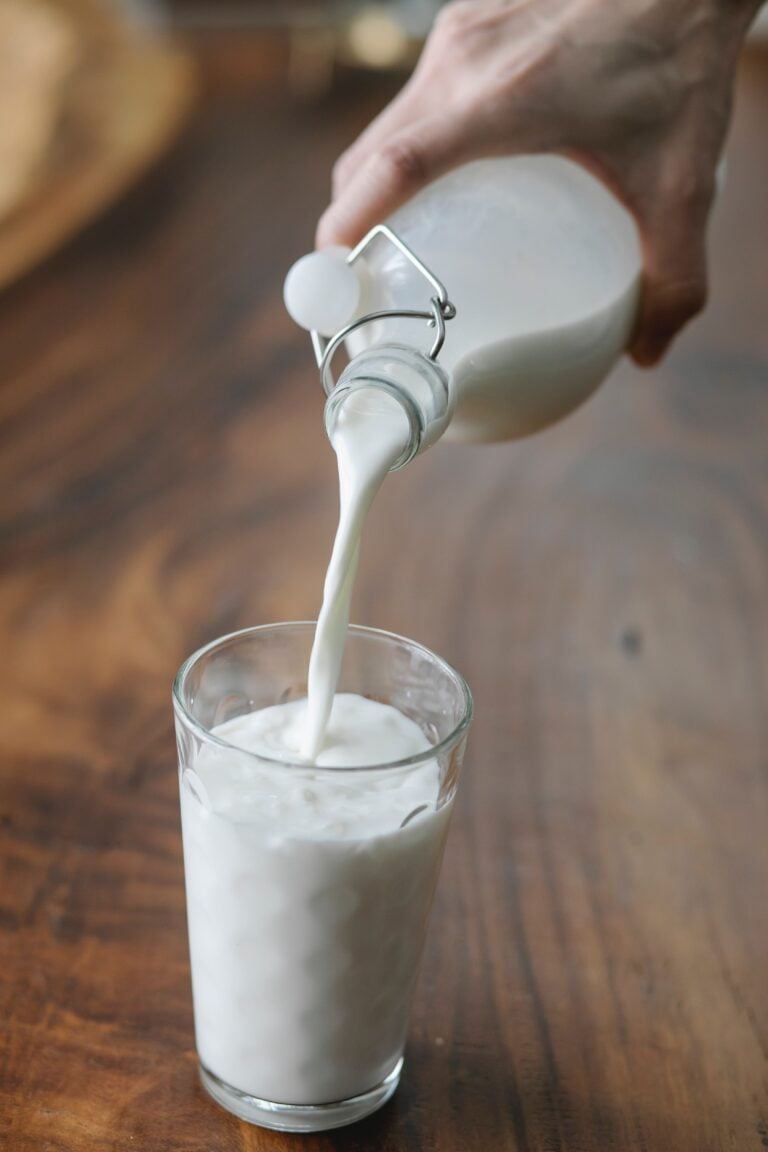In the UK, around one in ten people are lactose intolerant and over 1 million people have a dairy allergy. According to cowsmilkallergy.co.uk, most children grow out of a cow’s milk allergy by the age of five. Although uncommon, it is possible to develop a milk allergy at any age.
Lactose itself is not an allergen; the allergy is to milk proteins (e.g., casein, whey), not the lactose sugar. Thus, only milk, as a whole category, is included in the 14 major food allergens under UK law, which requires specific labelling.
What is a Milk Allergy?
Amy E. Barto explains that, “Lactose intolerance and milk allergy are very different entities”.
Milk Allergy: A milk allergy involves the immune system reacting to proteins found in milk, primarily casein and whey. Symptoms can include hives, swelling, and in severe cases, anaphylaxis. Because milk allergy is immune-mediated and can cause severe reactions, milk is classified as one of the 14 major allergens in the UK. Under UK regulations, food products must clearly label the presence of milk as an allergen.
Lactose Intolerance: This is a digestive condition, not an allergy, caused by a lack of lactase enzyme, which is needed to digest lactose (milk sugar). Symptoms include bloating, gas, and diarrhoea, but it does not trigger an immune response. While uncomfortable, lactose intolerance is generally less serious than a milk allergy. Products labelled as “lactose-free” cater to this condition but are not necessarily safe for individuals with milk allergies.

Symptoms of a Milk Allergy
When having an allergic reaction, you may notice some symptoms immediately, whilst others take some time to develop.
Mayo Clinic lists immediate symptoms as:
- Hives
- Wheezing
- Itching or tingling feeling around the lips or mouth
- Swelling of the lips, tongue or throat
- Coughing or shortness of breath
- Vomiting
Symptoms that may develop over time:
- Loose stools or diarrhoea, which may contain blood
- Abdominal cramps
- Runny nose
- Watery eyes
- Colic (in babies)
Anaphylaxis Shock
According to Kids Health, anaphylaxis is a life-threatening reaction that causes the airways to swell and close, putting the body into shock.
Anaphylaxis may start with similar symptoms to a milder reaction but quickly worsen. People suffering from an allergic anaphylactic response should immediately use an epinephrine auto-injector (EpiPen) and contact the emergency services.
UK Allergen Labelling Compliance for Milk
In the UK, the Food Information Regulations 2014 mandates that all food products containing milk must include clear allergen labelling. This ensures that consumers with milk allergies are aware of any potential risk. “Milk” must be indicated in bold or a different font within the ingredients list of pre-packed food, regardless of whether the product is sold in a store, restaurant, or online.
Distance Selling Requirements: For foods sold online or via delivery services, allergen information about milk must be provided both before the sale is completed and upon delivery to ensure consumers have all necessary information.
Lactose Intolerance

Bupa says that lactose intolerance is when the body has trouble breaking down lactose, a sugar found in dairy. This happens when the body does not produce enough lactase, the enzyme used to break down lactose and allow them to absorb into the bloodstream. If the lactose is not absorbed, the lactose will move into your large intestine, and the bacteria will break down the lactose producing carbon dioxide, hydrogen and methane. These gasses lead to the unpleasant symptoms of lactose intolerance.
There are four different types of lactose intolerance; Primary, secondary, congenital and developmental.
- Primary lactose intolerance happens naturally and develops on its own over time. This is the most common type of lactose intolerance.
- According to the NHS, Secondary Lactose Intolerance is a shortage of lactase caused by a problem in the small intestine such as gastroenteritis, inflammatory bowel disease or coeliac disease. Secondary lactose intolerance is often temporary and can get better upon recovery from the condition that caused it.
- Congenital lactose intolerance is very rare and often runs in families. It is caused by a genetic fault causing babies to produce very little or no lactase. It is a rare and serious condition in babies and requires urgent treatment.
- Developmental lactose intolerance is a temporary lactase deficiency found in babies born prematurely due to their small intestine not being fully developed. This deficiency will improve as the baby gets older.
Symptoms of Lactose Intolerance
The NHS lists symptoms of lactose intolerance as:
- Gas
- Diarrhoea
- A bloated stomach
- Stomach cramps and pains
- Stomach rumbling
- Feeling nauseous – and those who suffer from lactose intolerance may report vomiting as a result.
Treatments of lactose intolerance include:
- Changing of diet by avoiding foods and drink such as milk, dairy, chocolate, biscuits, and baked other goods. Lactose substitutes can replace these.
- Taking medication
What is Dairy?
According to healthline, dairy is defined as “foods produced from the milk of mammals such as cows and goats”.
Common dairy products include:
- Milk
- Cream
- Butter
- Yoghurt
- Cheese
- Custard
- Ice-cream

Add Your Heading Text Here
• Avoidance and Cross-Contamination: Even trace amounts of milk protein can cause reactions in individuals with a milk allergy. Businesses should implement stringent cross-contamination practices, particularly if offering products labelled as “dairy-free” or “lactose-free,” to ensure no risk of milk protein exposure.
• Staff Training: Food service staff should be trained to differentiate between lactose intolerance and milk allergy and how to respond to queries regarding “dairy-free” or “lactose-free” products. Milk-free and lactose-free labels should be accurately described to avoid confusion.
• PAL (Precautionary Allergen Labelling): If cross-contamination cannot be entirely prevented, businesses may consider Precautionary Allergen Labelling (e.g., “May contain milk”) to inform consumers with milk allergies.
The Distinction between Milk Allergy and Lactose Intolerance
In conclusion, understanding the distinction between milk allergy and lactose intolerance is crucial for both consumers and food industry professionals.
Proper labelling and proactive safety measures help protect consumers with milk allergies from harm.
By following UK allergen regulations, food businesses can provide a safer experience for their customers and build trust within the marketplace.
LiberEat’s Allergy Detection Technology
LiberEat’s Allergen Detection Technology provides a second line of defence for food businesses by detecting allergens and other harmful ingredients found in food. Food businesses can apply this technology directly to identify errors in allergen communications, preventing the risk of injury or loss of life in consumers. Get in touch with us today to learn more about our Allergen Detection Technology.
Sources: Mayo Clinic, Cows Milk Allergy UK, Allergy UK, Bupa, Every Day Health, NHS

